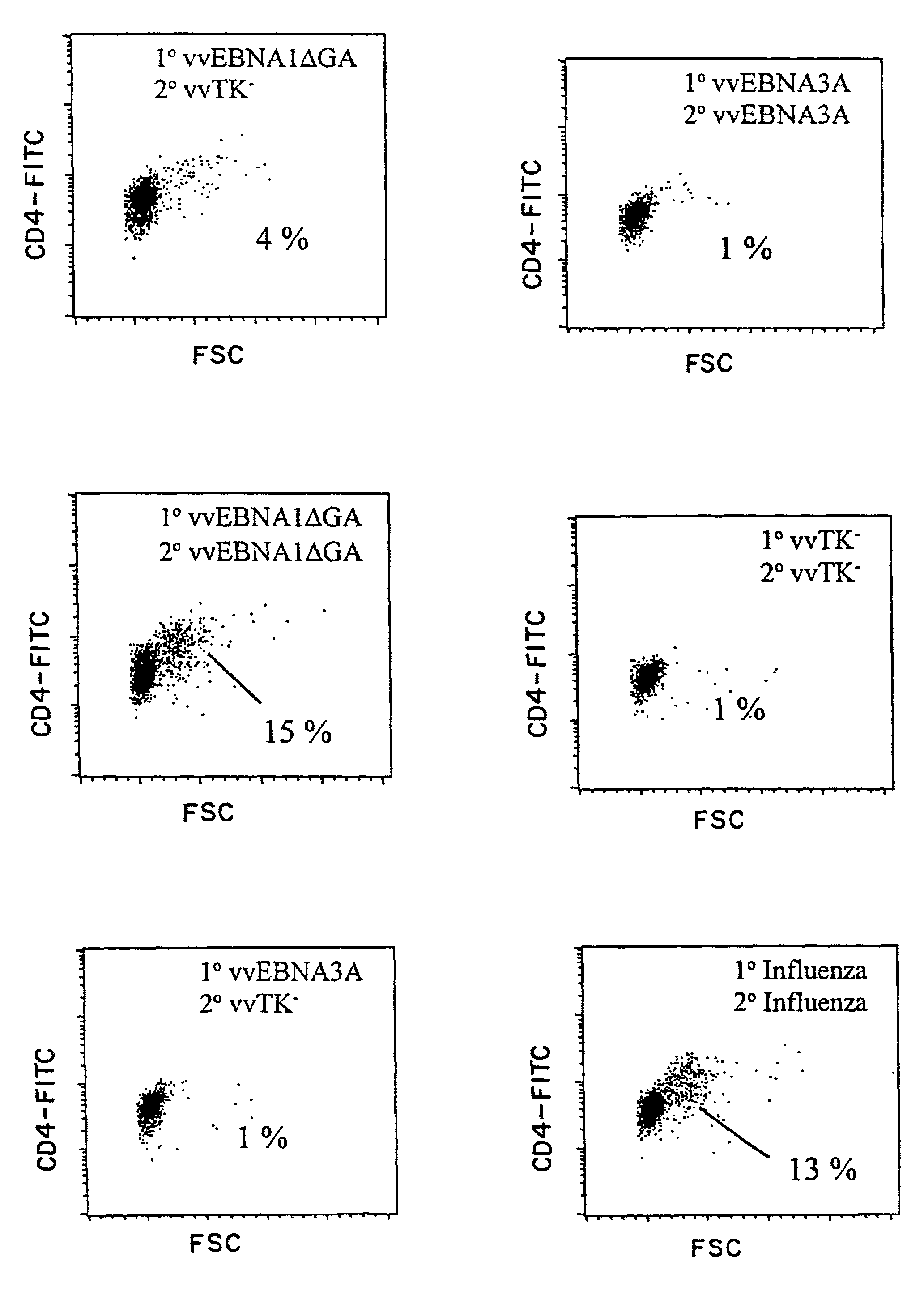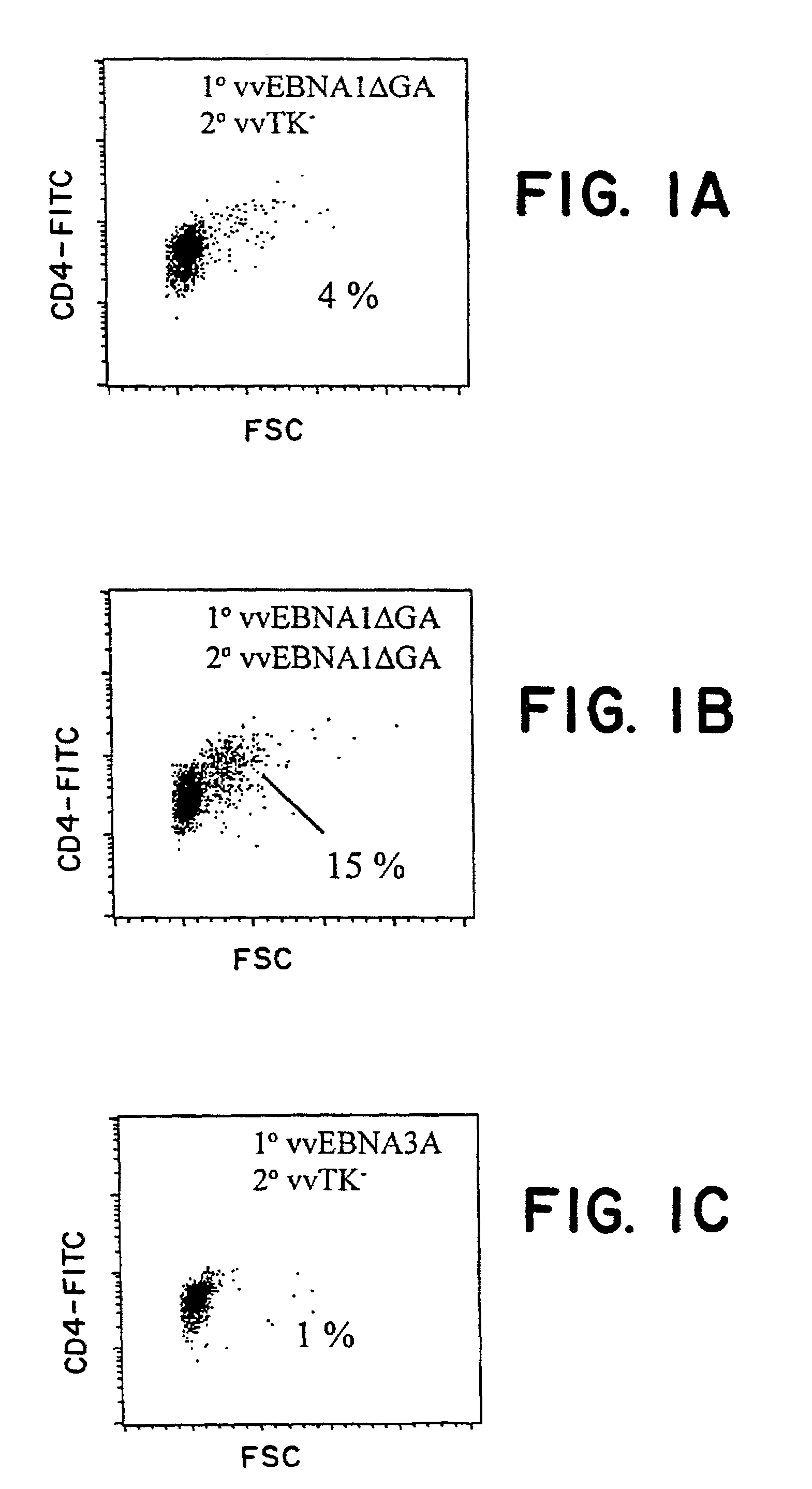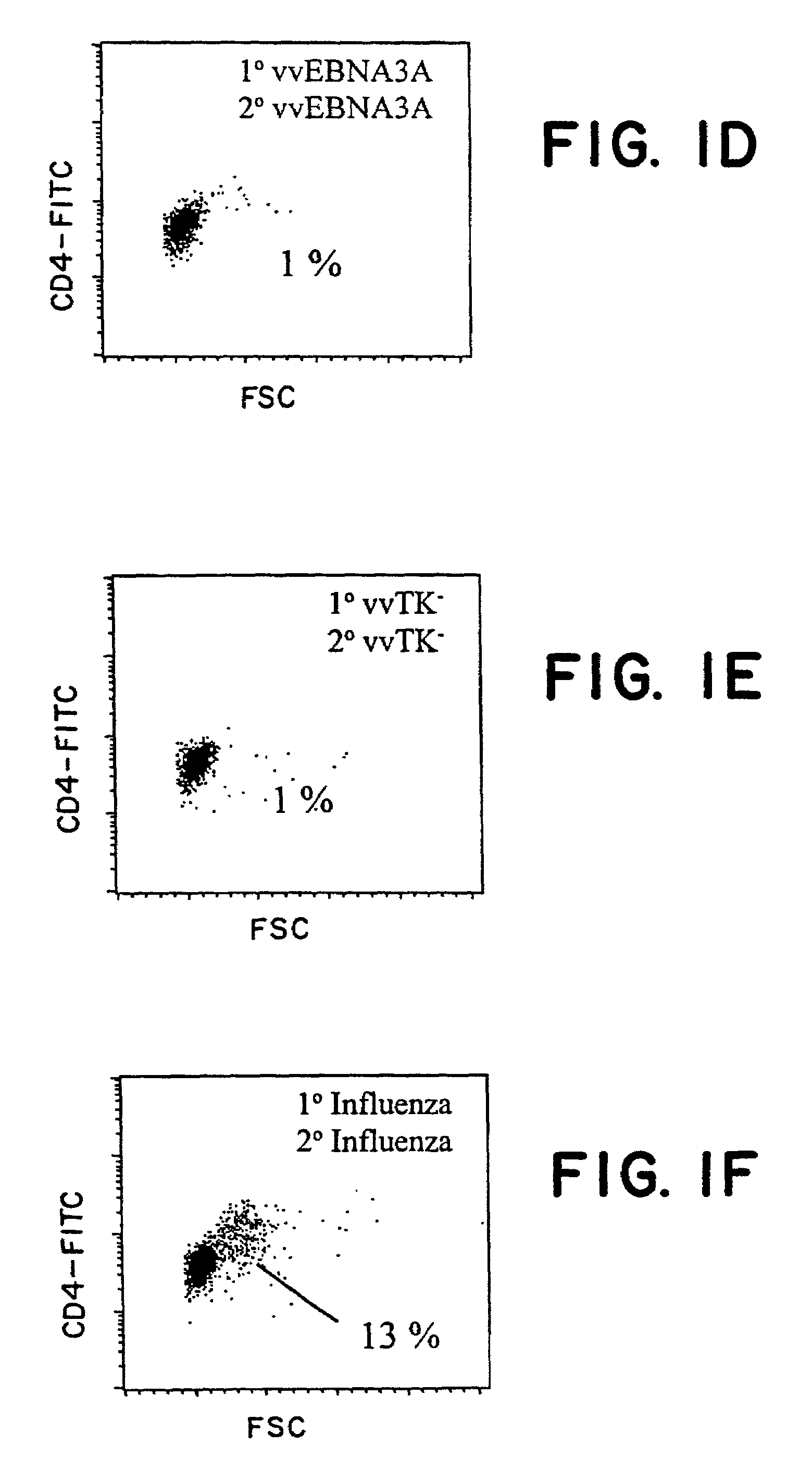Protective antigen of Epstein Barr Virus
a technology of epstein barr virus and antigen, which is applied in the field of identification of vaccines, can solve the problems of not being able to detect ebv specific t cell responses, unable to detect ebna-1, and not being able to elicit protective immunity
- Summary
- Abstract
- Description
- Claims
- Application Information
AI Technical Summary
Benefits of technology
Problems solved by technology
Method used
Image
Examples
example 1
Identification of Positive CD4+ Response to Individual Latent EBV Products
[0105]For EBNA-1, we delivered the antigen either exogenously as recombinant protein (Zhang, et al., Nucleic Acids Res., 26:631-7, 1998; Frappier and O'Donnell, J. Biol. Chem., 266:7819-26, 1991), or endogenously via recombinant vaccinia virus constructs. We have uncovered a strong CD4+ T cell response to EBNA-1 presented by either pathway, as monitored by T cell activation and proliferation, IFNγ secretion, and CTL activity. This immune response may be harnessed to resist EBV infection and EBV-associated malignancy.
Material and Methods
[0106]Cell lines. The EBV transformed B cell lines LRM (HLA-A2, -B44, - DRB1*0401, -DQA1*03, -DQB1*0301, -DP4) (Friede, et al., Biochim. Biophys. Acta., 1316:85-101, 1996) and LG2 (HLA-DRB1*0101, -DQA*0101, -DQB1*0501, -DPA1*0101, -DPB1*0201) (Gorga, et al., J. Biol. Chem., 26:16087-94, 1987) were used. B-LCL were cultured in RPMI-1640+10% FCS+5 mM glutamine+20 μg / ml gentamicin....
example 2
The EBNA-1-specific CD4+ T cells are primarily TH1 in function
[0135]Example 1 discloses a consistent EBNA-1-specific, CD4+ T cell response in blood cells from healthy donors. To detect these CD4+ T cells, some of which could secrete IFNγ, a 2-week stimulation culture was used in which DCs were the antigen presenting cells and purified CD4+ T cells were the responders. This example establishes that the EBNA-1-specific CD4+ T cells are skewed toward a TH1 phenotype, and that this response can be detected in vivo.
Material and Methods
[0136]Dendritic cell and CD4+ T cell preparation. For the generation of DCs, see Example 1 above. In some experiments, a rEBNA-1 protein or rPCNA control protein was added to the DC cell culture at the indicated concentrations with the maturation stimulus. For use as target in 51Cr release assays, DCs were pulsed with either 1 μg / ml of rEBNA-1 protein or of the rPCNA control prior to use as targets. For positive selection of CD4+ T cells, CD 14 − cells were...
PUM
| Property | Measurement | Unit |
|---|---|---|
| Responsivity | aaaaa | aaaaa |
| Immunogenicity | aaaaa | aaaaa |
Abstract
Description
Claims
Application Information
 Login to View More
Login to View More - R&D
- Intellectual Property
- Life Sciences
- Materials
- Tech Scout
- Unparalleled Data Quality
- Higher Quality Content
- 60% Fewer Hallucinations
Browse by: Latest US Patents, China's latest patents, Technical Efficacy Thesaurus, Application Domain, Technology Topic, Popular Technical Reports.
© 2025 PatSnap. All rights reserved.Legal|Privacy policy|Modern Slavery Act Transparency Statement|Sitemap|About US| Contact US: help@patsnap.com



